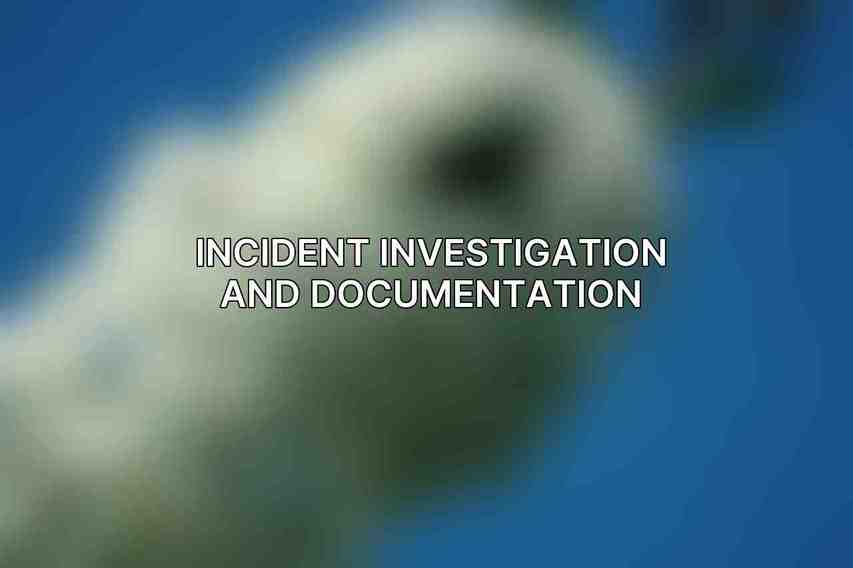In this dynamic business world, legal compliance in emergency planning is paramount to ensure the safety of employees and minimize risks for businesses. Adhering to regulatory requirements not only protects individuals in times of crisis but also shields organizations from potential liabilities that may arise from non-compliance. Understanding the legal framework surrounding emergency response planning is crucial for businesses to navigate effectively during unforeseen events. See our take on Comprehensive Guide to Emergency Response Training for Optimal Employee Preparedness
Pre-Emergency Planning
Before an emergency occurs, businesses must proactively address legal requirements in their emergency response planning. This involves identifying applicable laws and regulations at various levels, including federal statutes like the Occupational Safety and Health Act (OSHA), Environmental Protection Agency (EPA) guidelines, and the Americans with Disabilities Act (ADA). Additionally, businesses need to consider state and local regulations along with industry-specific standards that may impact their emergency preparedness efforts.
Establishing a comprehensive compliance framework is essential for effective emergency planning. This includes developing policies and procedures for incident response, conducting regular training sessions and drills to ensure readiness, and maintaining detailed documentation and recordkeeping practices. Furthermore, businesses must take into account the legal responsibilities of key personnel such as owners, managers, and employees, while also considering liability waivers to mitigate risks during emergencies.
Emergency Response
During an emergency, swift and effective responses are critical in safeguarding lives and minimizing damages. Businesses must adhere to legal requirements regarding evacuation procedures and employee safety, ensuring proper communication and notification protocols are in place. Establishing a clear chain of command and decision-making authority is vital for incident management and control, while also considering legal implications for containment and mitigation efforts. Post-emergency recovery should also address legal obligations for the restoration of operations and fulfill documentation and reporting requirements as mandated by law.
Legal Considerations for Specific Emergencies
Different types of emergencies require tailored responses and come with specific legal considerations. Natural disasters like hurricanes and earthquakes necessitate evacuation and shelter requirements, along with addressing property damage and occupational health hazards. Man-made disasters such as industrial accidents or terrorism incidents require emergency response plans for hazardous material incidents, emphasizing workplace safety responsibilities. Pandemic response planning brings forth legal implications related to health and safety measures, ensuring compliance with quarantine and isolation protocols to protect employees and the community.
Incident Investigation and Documentation

Following an emergency, businesses must adhere to legal requirements for incident reporting, including evidence gathering and preservation for potential investigations. Conducting thorough root cause analysis and implementing corrective actions based on findings are essential in preventing future incidents and demonstrating a commitment to continuous improvement in emergency response procedures.
Compliance Monitoring and Evaluation
Regular monitoring and evaluation of compliance practices through audits, reviews, and training programs are necessary to maintain a robust emergency response framework. Mock drills and emergency simulations help assess readiness levels and identify areas for improvement. Understanding the legal implications of non-compliance, including civil fines, penalties, criminal charges, and negligence lawsuits, underscores the importance of upholding regulatory standards in emergency planning.
Best Practices for Legal Compliance

Adopting best practices can enhance legal compliance in emergency response planning. Collaborating with legal counsel to navigate complex regulatory environments, utilizing compliance software and tools for streamlined operations, maintaining up-to-date emergency plans, and fostering a culture of compliance and awareness within the organization can significantly bolster preparedness for unforeseen emergencies.
prioritizing legal compliance in business emergency response planning is integral for enhancing safety and reducing liabilities. Continuous improvement and adaptation of emergency preparedness strategies based on evolving legal requirements and industry best practices are key to ensuring optimal responses during crises. By aligning emergency planning efforts with legal obligations, businesses can safeguard their employees, protect their operations, and demonstrate a commitment to safety and regulatory compliance.
Frequently Asked Questions
What is emergency response planning for a business?
Emergency response planning for a business involves creating protocols and procedures to effectively respond to various crises or disasters, ensuring the safety of employees, customers, and the business as a whole.
What legal requirements are there for business emergency response planning?
Legal requirements for business emergency response planning vary by jurisdiction but typically include OSHA regulations, building codes, environmental regulations, and industry-specific guidelines. It is important for businesses to stay informed about these requirements to avoid legal consequences.
How can businesses ensure compliance with legal requirements for emergency response planning?
Businesses can ensure compliance with legal requirements for emergency response planning by conducting regular risk assessments, developing comprehensive emergency response plans, providing employee training, conducting drills and exercises, and staying up to date on relevant laws and regulations.
What are the consequences of non-compliance with legal requirements for emergency response planning?
Non-compliance with legal requirements for emergency response planning can result in fines, lawsuits, reputational damage, and, most importantly, endangering the safety of employees and the public. It is essential for businesses to take compliance seriously and prioritize emergency preparedness.
Are there resources available to help businesses navigate legal requirements for emergency response planning?
Yes, there are resources available to help businesses navigate legal requirements for emergency response planning. These include government agencies, industry associations, legal consultants, and online tools and guides. Businesses should take advantage of these resources to ensure they are meeting all necessary legal obligations. Discover our thoughts on How to Develop an Effective IT Disaster Recovery Plan for Businesses
